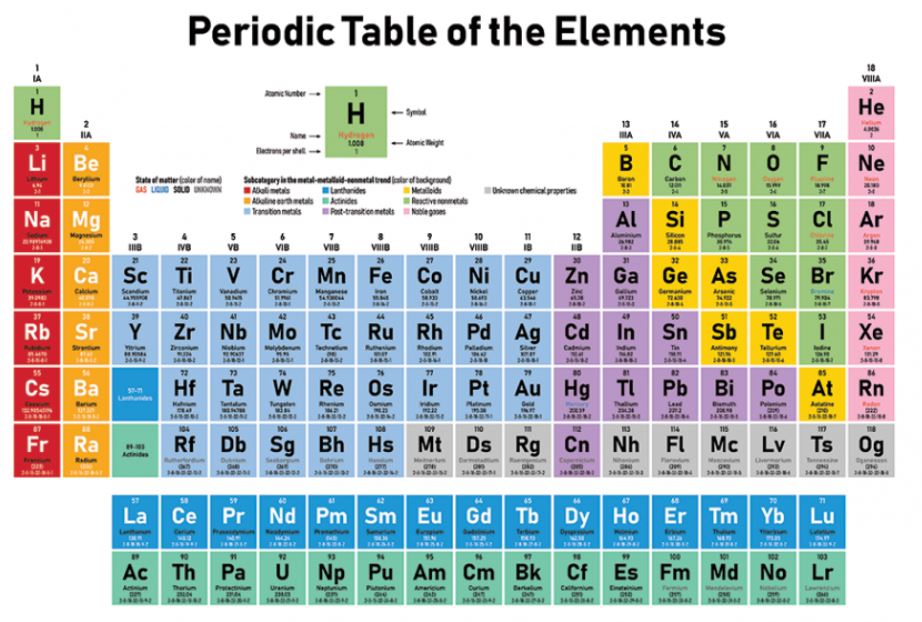Hello and welcome to Teach Kids Chemistry! Today, we will be discussing the fascinating element known as holmium. Holmium is a rare earth metal that is found in the Earth’s crust and has unique properties that make it useful in a variety of applications. In this overview, we will explore the basics of holmium, including its atomic structure, physical and chemical properties, and its uses in everyday life. So, let’s dive in and discover the wonders of holmium!
The Periodic Element Holmium Overview
Holmium is a rare earth element with the atomic number 67 and symbol Ho. Its atomic mass is 164.93 g/mol, and it has 67 protons and 67 electrons. The number of neutrons in holmium can vary, but the most common isotope has 98 neutrons. Holmium is located in period 6 and group 3 of the periodic table. It is a metal and belongs to the lanthanide series. Holmium has a high electronegativity of 1.23 and a specific heat capacity of 27.15 J/mol·K. Its melting point is 1474°C, and its boiling point is 2700°C. The density of holmium is 8.795 g/cm³.Holmium is a relatively soft and malleable metal that is silvery-white in color. It is a rare earth element that is used in various applications, including nuclear reactors, lasers, and magnets. Holmium has unique magnetic properties that make it useful in magnetic resonance imaging (MRI) machines. It is also used in the production of high-strength magnets for electric motors and generators. Holmium has a relatively high melting and boiling point, which makes it useful in high-temperature applications. Overall, holmium is an important element with unique properties that make it useful in a variety of applications.
Everyday objects that contain the periodic element holmium?
There are many everyday objects that contain chemicals or chemical compounds. For example, water is a chemical compound made up of two hydrogen atoms and one oxygen atom (H2O). Salt, which is commonly used in cooking, is a compound made up of sodium and chloride ions (NaCl). Baking soda, which is used in baking and cleaning, is a compound made up of sodium, hydrogen, carbon, and oxygen (NaHCO3). Vinegar, which is used in cooking and cleaning, is a solution of acetic acid (CH3COOH) and water. These are just a few examples of everyday objects that contain chemicals or chemical compounds.
Differences in the periodic element holmium across states of matter
The state of an element can vary greatly depending on its temperature and pressure. At standard temperature and pressure (STP), most elements are either solids or gases. Solids have a fixed shape and volume, while gases have neither. As temperature and pressure increase, some solids can become liquids, which have a fixed volume but take the shape of their container. As temperature and pressure continue to increase, some liquids can become gases, which have neither a fixed shape nor volume. At extremely high temperatures and pressures, some gases can become plasmas, which are highly ionized and conductive. Plasmas are often found in stars and lightning bolts, and have unique properties such as the ability to emit light.
Is the periodic element holmium dangerous or radioactive?
Holmium is a rare earth element that is not considered dangerous or radioactive. It has no known biological role and is not toxic to humans or animals. Holmium is used in various applications, including nuclear reactors, lasers, and magnetic resonance imaging (MRI) machines. While it is not a commonly used element, it poses no significant health risks to those who come into contact with it.
Is the periodic element holmium rare and expensive?
Yes, holmium is a rare and expensive element. It is a member of the lanthanide series and is found in very small quantities in the Earth’s crust. It is primarily obtained from minerals such as monazite and gadolinite. The cost of holmium can vary depending on the purity and quantity required, but it is generally more expensive than other common elements. Due to its unique magnetic properties, holmium is used in various applications such as nuclear reactors, lasers, and electronic devices.
Learn about all the elements with a periodic table!

